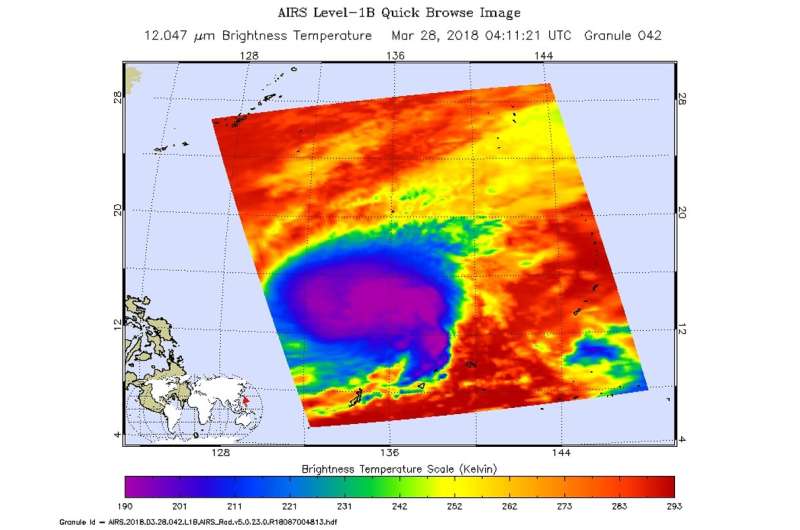NASA finds Tropical Storm Jelawat strengthening

Infrared imagery from NASA's Aqua satellite revealed that Tropical Storm Jelawat was getting stronger as it moved through the Northwestern Pacific Ocean.
NASA's Aqua satellite passed over Jelawat on March 28 at 12:11 a.m. EDT (0411 UTC) and analyzed the storm in infrared light. Infrared light provides temperature data and that's important when trying to understand how strong storms can be. The higher the cloud tops, the colder and the stronger they are.
AIRS data showed coldest cloud top temperatures in thunderstorms flaring around Jelawat's center as cold as minus 63 degrees Fahrenheit (minus 53 degrees Celsius). Storms with cloud top temperatures that cold have the capability to produce heavy rainfall.
On March 28 at 11 a.m. EDT (1500 UTC) Jelawat's maximum sustained winds strengthened to 50 knots.
The center of the tropical storm was located near 15.0 degrees north latitude and 135.6 degrees east longitude, that's about 345 nautical miles north-northwest of Yap State. Jelawat has tracked northward at 9 knots.
The Joint Typhoon Warning Center forecast calls for Jelawat to intensify to hurricane force in 24 hours and then begin a weakening trend on March 31.
Provided by NASA's Goddard Space Flight Center




















